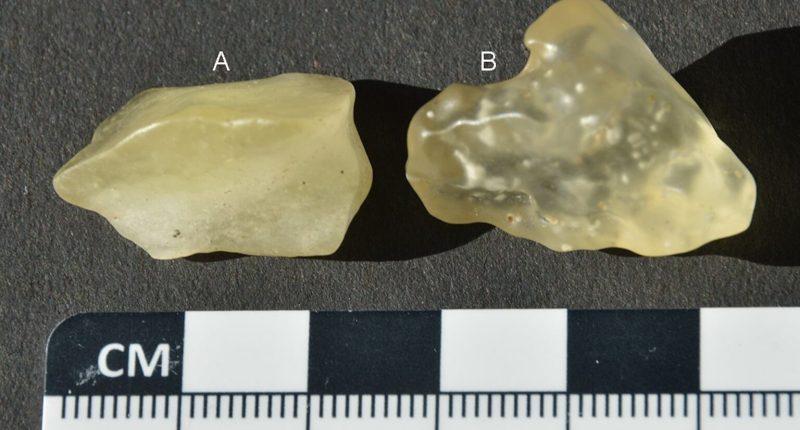RESEARCHERS believe an intense impact of a meteorite 29 million years ago may be what formed a bizarre yellow glass that is found only in a certain spot of the Great Sand Sea Desert.
The yellow glass can only be found scattered in a particular part of the desert in southeast Libya and southwestern parts of Egypt.
The glass was first brought to light in a scientific paper in 1933 as silica glass from the Libyan Desert.
It caught the researcher’s attention early on due to its rarity and mystery.
Other natural glasses can be found on Earth but nothing has had such high levels of silica as the yellow glass.
The Libyan desert glass has also been cherished by mineral collectors for the same reasons for decades.
The yellow glass was also found attached to a pendant that was inside Egyptian pharaoh Tutankhamun’s tomb proving its importance during that time as well.
The pendant includes extremely prominent symbols from Egyptian times like the Eye of Ra and the wings of Isis – the yellow glass sits right in the middle of the wings.
The origin of the yellow glass has remained a mystery for almost a century, but new advanced microscopy technology has allowed researchers to get closer to an answer.
NEW ORIGIN CLUES
The new findings were published on De Gruyter on October 4.
Most read in News Tech
The paper is titled: Libyan Desert Glass: New evidence for an extremely high-pressure-temperature impact event from nanostructural study.
The advanced microscopy technology allowed the researchers to see super small minerals called zirconium oxide (ZrO₂).
The pressure and temperature needed to create Zirconium oxide can only be formed in certain conditions.
It can only be obtained in the Earth’s crust by a meteorite impact or the explosion of an atomic bomb, the researchers explained.
The researchers highly believe it was an extraterrestrial impact that hit the ground 29 million years ago at such intense pressure to create the glass.
However, to ultimately prove the findings to be correct, the researchers need to find the parental crater where the meteorite hit the Earth’s surface.
They believe it might possibly be eroded, deformed, or covered by sand.










